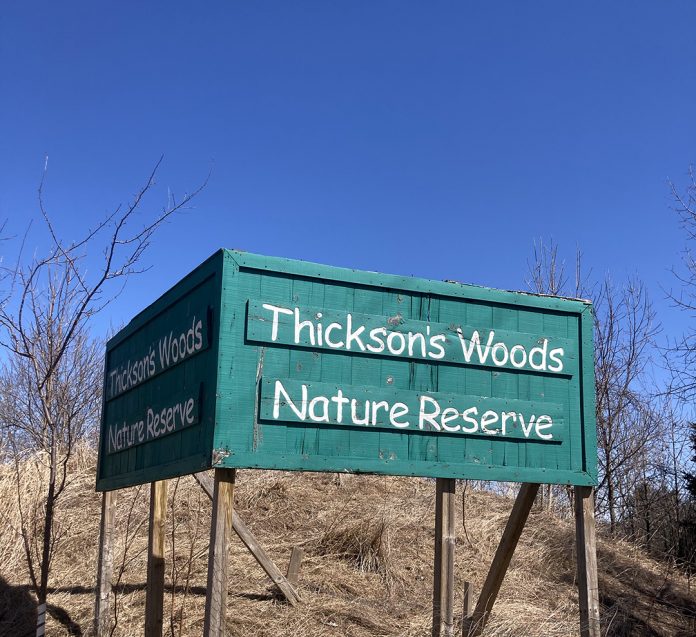CO-WRITTEN BY DESI HUDDY
If you drive down Thickson Road South in Whitby, past two packing companies, a concrete accessories store, an Amazon warehouse and an insurance broker, a mini oasis sits quietly at the end, adjacent to the shores of Lake Ontario.
Thickson’s Woods stands on Haudenosaunee land, part of the Iroquoian Indigenous confederacy in northeast North America. It was sold to The Crown in the Williams Treaty of 1923 and kept relatively undisturbed – until 1984.
The Crown sold the logging rights to the 16 acre property and clearcutting began. More than 50 ancient white pine trees, which serve as important landmarks and resting places for migrating birds, came crashing to the ground in a single day. Fortunately for the local wildlife, nature lovers in the area were not going to let the land be destroyed without a fight.
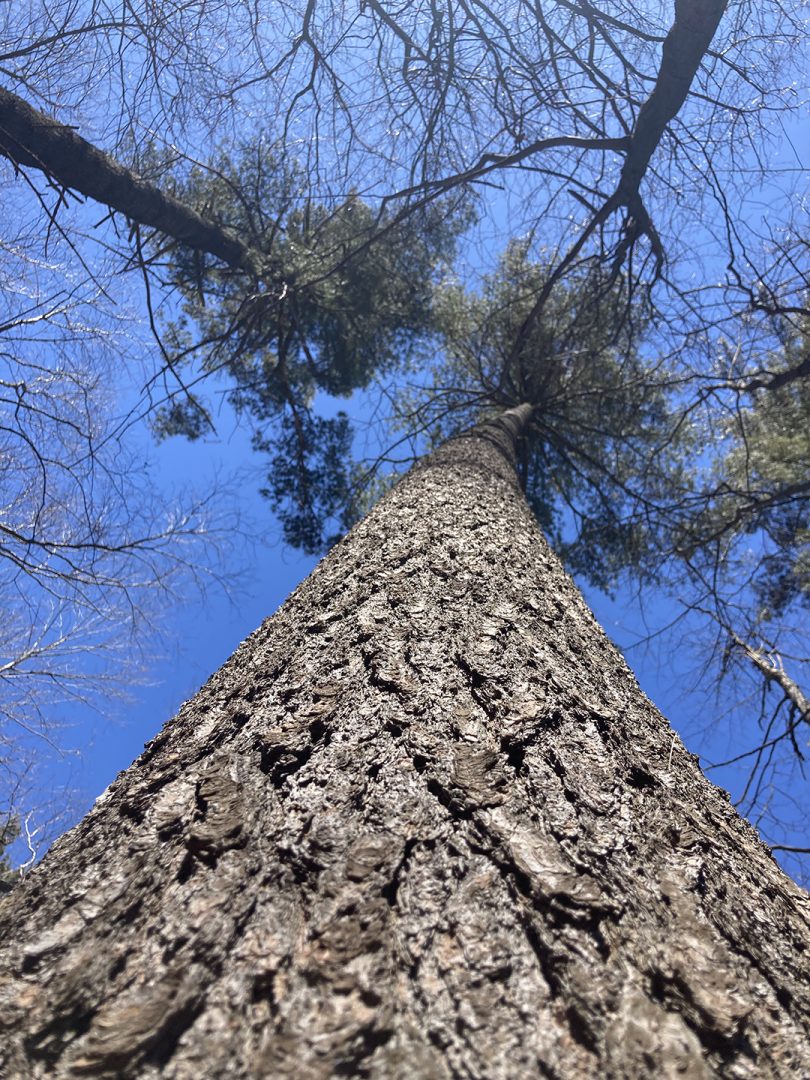
“They laid down in front of the bulldozers, so to speak,” said Otto Peterson, President of the Thickson’s Woods Land Trust.
The group of naturalists, determined to save the wooded area, asked the developers what the cost of the land would be.
The answer was $90,000, with a $30,000 down payment.
“They went out and raised money, with no big corporate donations or anything, they raised funds in the community,” said Peterson.
The naturalists raised funds through yard sales, an art raffle, and bird-a-thons, but Peterson said most of the money came from donations. Within a year, they bought the land and created the Thickson’s Woods Land Trust. The remaining $60,000 was paid off over the next five years.
The trust promised to preserve the land and provide a safe space for local plants and wildlife, as well as a resting place for thousands of migrating birds annually.
Current land trust member Dan Shire said the efforts of these individuals was crucial in preserving the landmark.
“It probably would’ve turned into a distribution centre or a parking lot, something like that,” said Shire.
The events were covered by Arlin Hackman in the ‘Earth Watch’ section of a June 1984 publication of Ontario Nature Magazine.
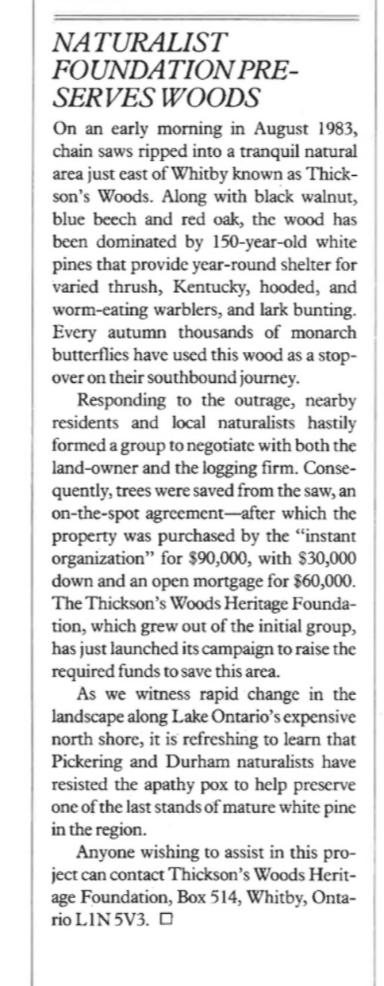
“As we witness the rapid change in the landscape along Lake Ontario’s expansive north shore, it is refreshing to learn that Pickering and Durham naturalists have resisted the apathy pox to help preserve one of the last strands of mature white pine in the region,” said Hackman in the column.
In 2001, the land trust extended its reach by once again fundraising – this time $531,000 – to purchase about eight acres nearby meadow. The area has been protected through the land trust ever since.
Phil Holder said his family has been birdwatching as long as he can remember. When they moved to Canada in 1982, Thickson’s Woods became a frequent location for family outings.
“It was one of our favourite places, we used to go there all the time,” said Holder, who sat on the board for 10 years.
“Unfortunately, my son passed away in 2011 and my wife and I wanted to do something in his memory. Thickson’s Woods was one of his favourite places to birdwatch,” said Holder about his son Matt, a successful biologist and author who passed unexpectedly at the age of 37.
They created the Matt Holder Foundation, an environmental research fund for Thickson’s Woods. They began by publishing ‘The Birds of Thickson’s Woods,’ a field guide for bird species that have been seen in the woods.
Over the years the foundation has done a number of research projects on biodiversity based in Thickson’s Woods, including data collection on bats, birds, bees, flowers, fungi, dragonflies, fireflies, gastropods and an ongoing moth study finding more than 1,200 species in the woods.
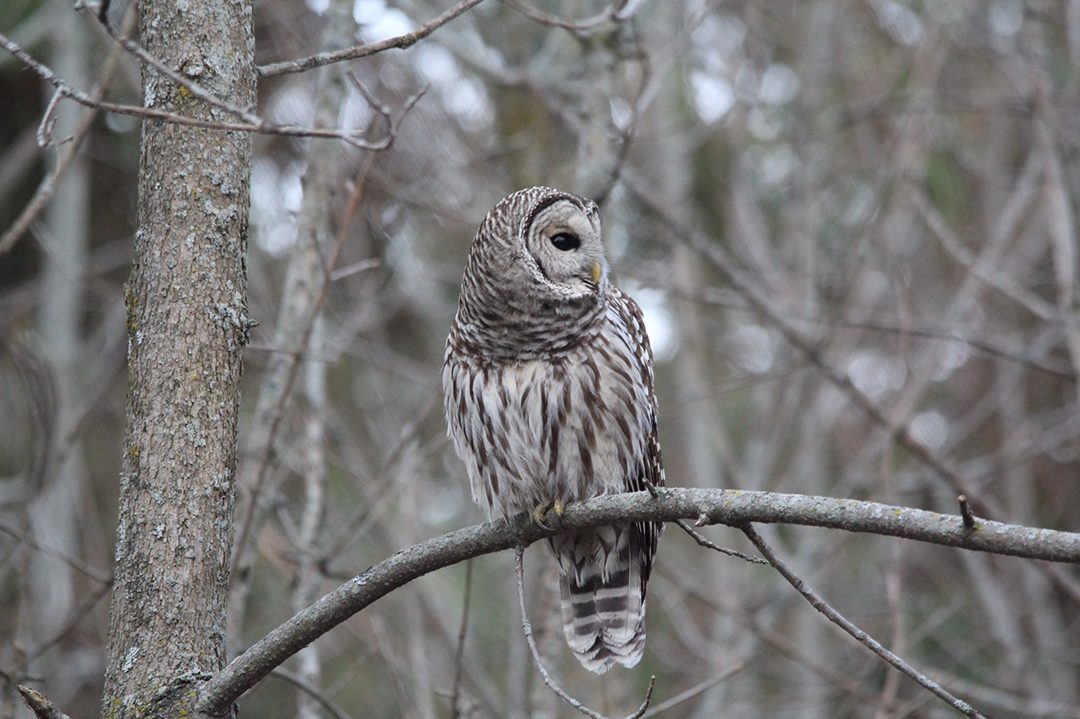
“We’ve found 327 species of birds, which is quite good, that’s about 70 per cent of all birds that occur in Ontario,” said Holder, “that’s why everybody goes there.”
According to Holder, the development that surrounds the woods poses a threat to biodiversity. The foundation conducted studies in the marsh area about how marsh life was affected by air and water pollution as well as oil spills and harmful chemical runoff from nearby industrial buildings.
“If we could stop that kind of pollution, we could help the marsh,” said Holder. “Interestingly, when the pandemic started and there was a shutdown, the marsh benefited very quickly. Nature has a wonderful way of repairing itself.”
Holder said it can be difficult for nature reserves to try to take on big industries that own nearby land, such as the Amazon packaging warehouse up the street.
“Industries don’t always obey rules and of course they pay taxes to the government and the town so there’s little appetite to take on some of the industry,” said Holder. “The steel plant across the street from Thickson’s does a lot of environmental work, they have their own environmental areas and they protect species, unfortunately air pollution is just as bad as ground pollution, and they pump a lot of it into the air.”
While the industry surrounding Thickson’s Woods can at times be damaging to its ecosystem, Shire said one of the main draws of Thickson’s Woods is providing an escape from the concrete and pavement of Oshawa and Whitby.
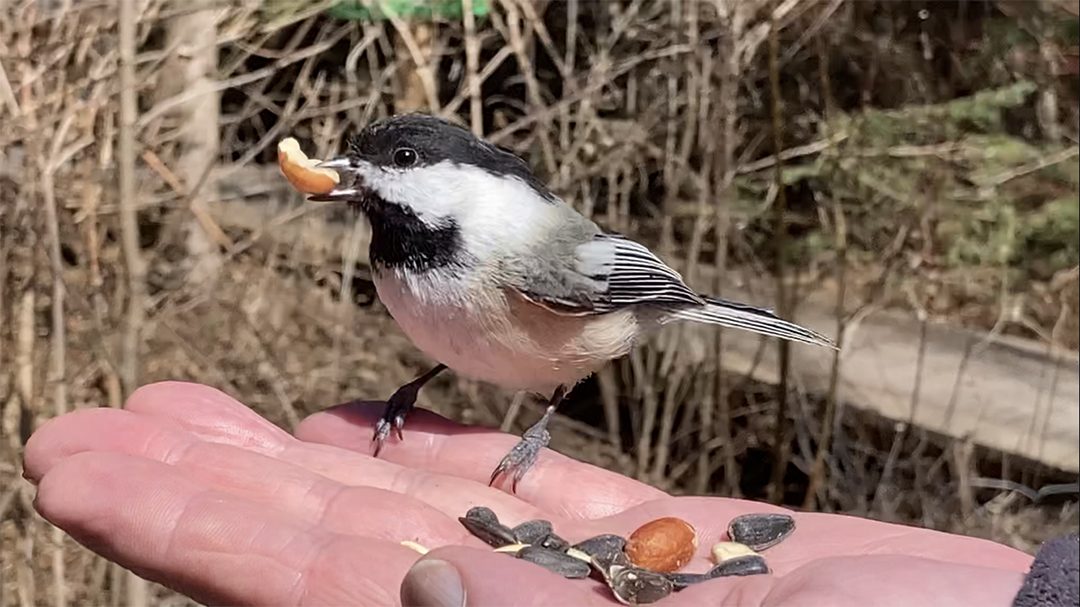
“It provides an opportunity for people who live in a pretty urban area to have an accessible place where they can go in and see nature,” said Shire. “There’s not too much a better feeling than feeding chickadees sunflower seeds out of your hands on a day when you’re feeling a little down. To have this magical little animal in your hand, looking at you, it’s good for your heart.”
Enter the woods below:




